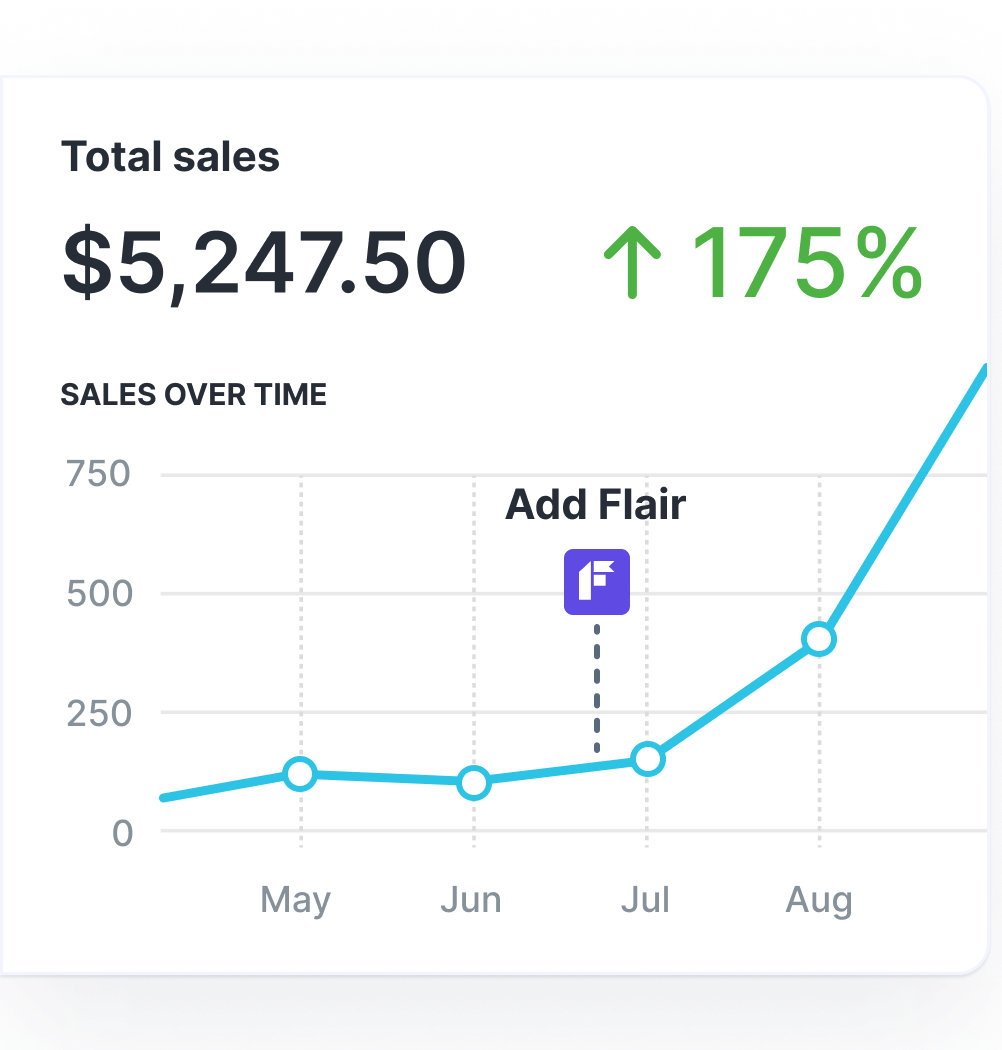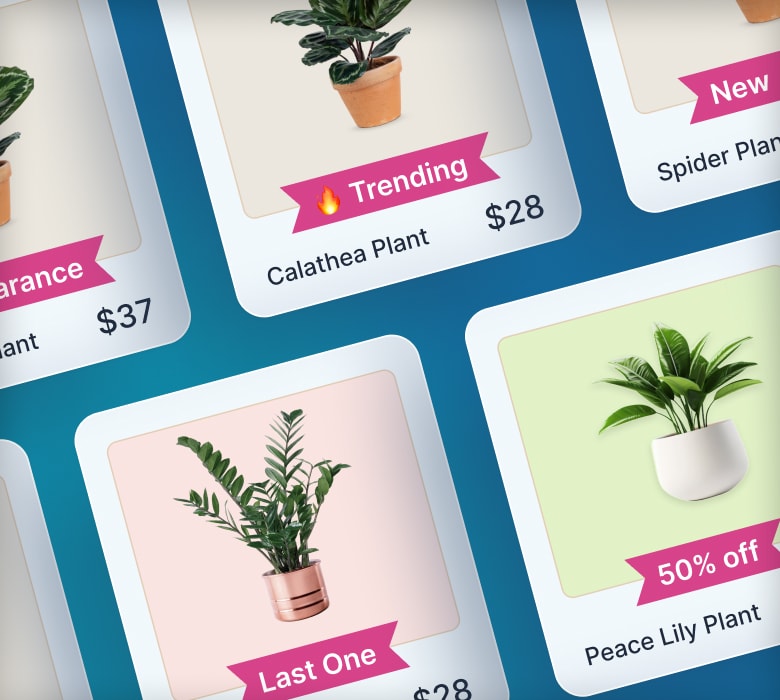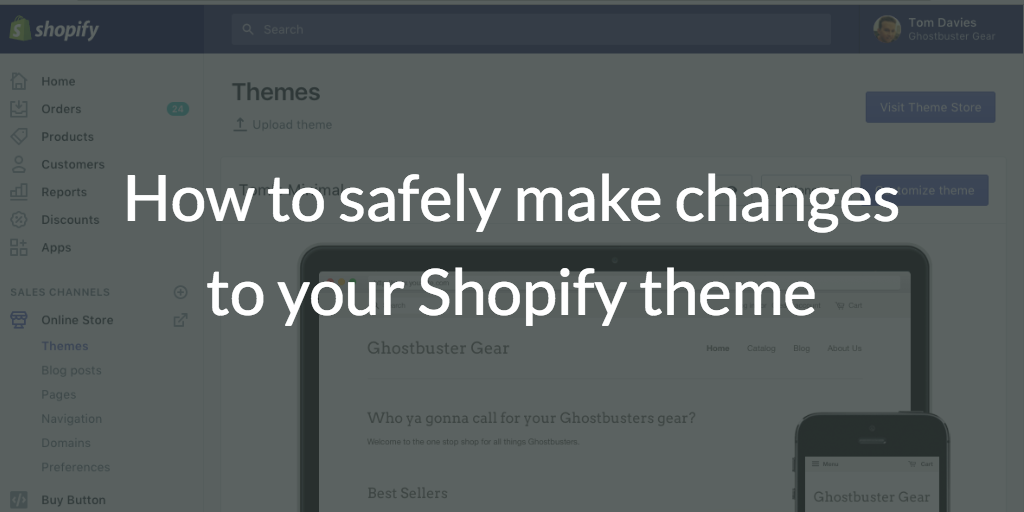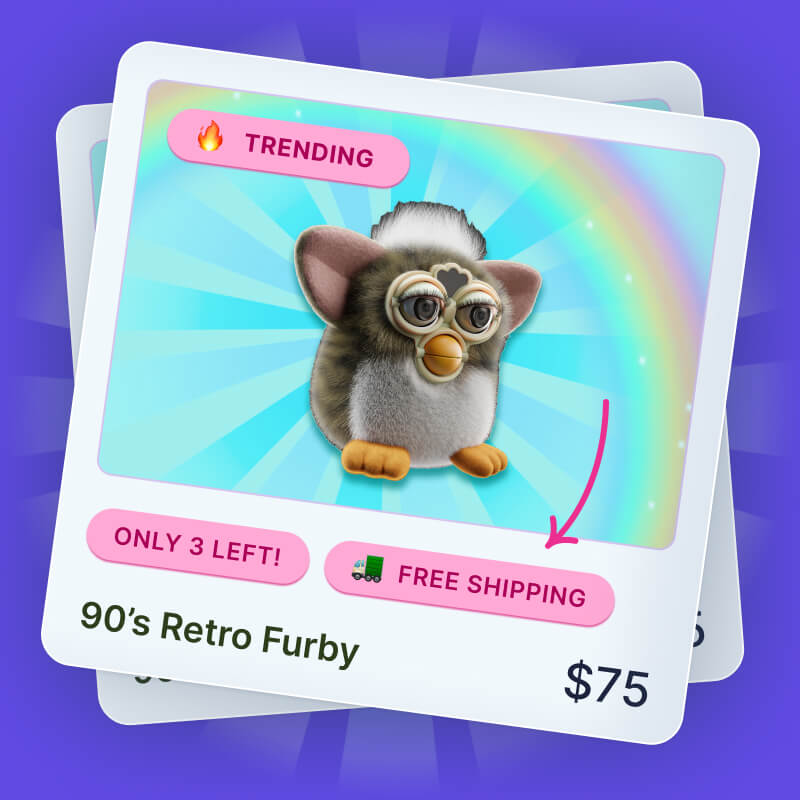Shopify SEO Problems: 9 Common Issues & How to Fix Them

From social media ads to email marketing to influencer campaigns, there’s no shortage of ways for Shopify merchants to reach their target audience.
But did you know that over two-fifths of all traffic to e-commerce stores comes from organic searches on Google?

So if your site isn’t search engine-friendly, you’re missing out on a ton of traffic and sales.
To help you out, we’ve rounded up nine of the most common Shopify SEO problems and shared exactly how to fix them…
1. Duplicate Product URLs
Shopify’s community help pages are full of merchants complaining that Shopify keeps automatically generating duplicate product URLs – and that those duplicate URLs are hurting their rankings:

It's all down to if your theme includes the current collection within the URL.
Some themes use page hierarchy to assign URLs, so the same product could have the following URLs:
👉 /products/slug
👉 /collections/collection-name/products/slug
And if the product is included in more than one collection, it’ll have different URLs for each.
This is a problem because it creates a sprawling mess of pages containing exactly the same content, which can result in search engines indexing multiple pages per product – thereby diluting the “ranking power” of the original page.
How to Fix Duplicate Product URLs
Duplicate product URLs are something of a legacy issue – most modern Shopify themes don’t use “product within collection” URLs, precisely because they’re bad for SEO.
Still, plenty of older stores will still be affected. If you’re in that boat, you can fix your duplicate product URL issue through one of three methods:
- See if your Shopify theme settings offer an option to disable “product within collection” URLs.
- Switch to a modern Shopify theme.
- Edit the theme code and replace
product.url | within: collectionwithproduct.url.
Pro tip: For help with changing themes, check out How to Change Shopify Themes Without Breaking Your Store.
2. Excessive Blog Tag Pages
Shopify lets you add tags to blog posts for two main reasons:
👉 To categorize blogs by theme, making it easier for visitors to find relevant content
👉 To filter and search blog posts within the Shopify admin
Trouble is, each tag becomes its own page, populated solely with articles sharing that tag. For instance, eco-conscious clothing brand Tentree has a blog tag page full of articles about sustainability:

Creating excessive blog tags results in a ton of pages containing thin or unnecessary content. Google doesn’t like thin content because it offers little (or no) useful information to users, and therefore has zero search value.
If you’ve got lots of pages like this, it can actually damage rankings across your store 🤦
How to Fix Excessive Blog Tag Pages
There are a few ways to tackle the issue of excessive blog tag pages.
Firstly, you can simply not create blog tags. Problem solved! However, tags are useful for categorizing blog posts – so if you blog about a range of topics, this isn’t an ideal solution.
Another option is to be super selective about the tags you use, rather than coming up with new tags every time you write a blog post. For instance, CBD brand NextEvo Naturals has created a logical series of tags covering all the topics they post about:

That way, they keep tight control over the amount of thin content pages created by blog tags.
You can also choose to no-index blog tag pages so they don’t show up in search results, thereby meaning they won’t affect your store’s SEO.
Pro tip: Check out Shopify’s guidance on how to hide a page from search engines.
3. Duplicate Product Tag Pages
On Shopify, product tags allow you to add filtering options to collection pages, making it easier for shoppers to find exactly the right product.
Pro tip: See our related guide: Shopify Product Tags for SEO: Do They Help & How to Use Them
For instance, fragrance retailer Dossier offers various filtering options, including brand, gender, and price:

Useful, huh?
But, once again, there’s a problem.
Imagine Dossier sold perfumes in three different sizes – 50 ml, 75 ml, and 100 ml. Each size has its own tag, leading Shopify to create the following URLs:
👉 /collections/perfume/50ml
👉 /collections/perfume/75ml
👉 /collections/perfume/100ml
Those automatically generated pages can’t be customized at all – no unique title tag, meta description, or content. So, once again, you’re left with a bunch of thin pages offering minimal value to shoppers.
Incidentally, you can see if this issue affects your store by Googling:
👉 site:[yourwebsite.com] intitle:Tagged -inurl:tagged

If a bunch of pages show up, you’ve got a product tagging issue to solve.
How to Fix Duplicate Product Tag Pages
The easy fix is to say: “Product tags are bad for SEO so I just won’t use them.”
Unfortunately, lots of stores rely on product tags for purposes like flagging products as on-sale or as part of a custom one-off Shopify collection. If that’s true for your store, you’ll have to find another solution.
In that case, the best alternative is to no-index your product tag pages, just like in the previous example.
Pro tip: If any of your product tag pages have decent search volume, consider using the keyword as the basis of a dedicated collection. For instance, “perfume under $50” gets 700+ searches a month in the US – that’s well worth targeting.
4. Limited URL Structure
We’ve talked a lot about URLs already, and they’re part of our next Shopify SEO problem too.
This time it’s about Shopify’s URL structure, which is more restrictive than some other e-commerce/website-building platforms. Shopify only allows a single subfolder per collection or product, so you can’t add much depth to your site structure.
For instance, in an ideal world, you might want a subcategory page that looks like this:
👉 yourwebsite.com/fragrance/mens/75ml
That way, you’ve got dedicated pages targeting keywords around fragrance, men’s fragrance, and 75 ml men’s fragrance, which is good for your store’s organic visibility.
Unfortunately, because Shopify categories have to include /collections/ within the URL, and are limited to one subfolder, you’d have to settle for something like:
👉 yourwebsite.com/collections/fragrance/mens-fragrance-75ml
This flat structure offers fewer keyword targeting opportunities so it’s less search-friendly.
How to Fix Limited URL Structure
While you can’t do anything about Shopify’s URL structure, there are a few ways to demonstrate the relationship of top-level and sub-collections to Google:
- Create a mega menu that groups related collections, like Petal and Pup does here:

- Add internal links on top-level collection pages to related sub-collections using relevant anchor text, like Gymshark does here:

- Use breadcrumbs and schema markup to show how sub-collections relate to their top-level “parent” collections, like Allbirds does here:

There’s no right or wrong answer here – you can even combine all three approaches if you want to be super clear about how different collections relate to one another.
5. Old and/or Out-of-Stock Product Pages
Chances are, you’re not going to sell exactly the same products throughout the whole life of your Shopify store.
Sometimes you’ll launch updated versions or new collections – at which point it might make sense to discontinue older lines. Plus there’s a good chance you’ll occasionally experience stock shortages for your most popular products, especially around key shopping events like Black Friday and Cyber Monday.
All of which means you need to find a solution for all those old and/or out-of-stock product pages. You can’t just delete them because you’ll end up with a ton of 404 errors – and those are bad for SEO.
How to Fix Old/Out-of-Stock Product Pages
Once again, there are a couple potential solutions to the problem of outdated/out-of-stock product pages.
If your product may be coming back, the simplest and most effective option is to create a dedicated “coming soon” page for each product.
(And even if you don’t plan on restocking it, you can still use the coming soon page to recommend related products.)
Alternatively, if you definitely won’t be selling the product again, consider redirecting customers to products that are in stock. That way, you can (hopefully) persuade them to buy something else instead. Do this using the 301 redirect feature in Shopify’s backend – then, when someone tries to visit an old or out-of-stock product page, they’ll be instantly redirected to a page of your choice. Learn how in Shopify’s guide to creating and managing URL redirects.
However, redirects can be frustrating for your customers – if you’re searching for one product but being shown another, that’s not a great user experience.
Also bear in mind that having lots of redirects can eat up your crawl budget, and that building “redirect chains” – where one product redirects to another, which redirects to another, and so on – can be bad for SEO.
6. Incorrect Breadcrumb URLs
We’ve already noted that breadcrumbs can be an effective SEO tool by helping you demonstrate the relationships between collections and sub-collections.
But they can be a little problematic.
In part, this is down to Shopify’s lack of hierarchy support, as discussed in the section on limited URL structure ☝️ This means you have to build and maintain your own hierarchy – which doesn’t always go well.
For instance, check out this Shopify community post, where the merchant explains that the breadcrumb takes users back to the Shopify All collection rather than the actual collection they clicked through from:

Not only does this make for a poor user experience, but it can also affect the way your pages are indexed, thereby harming your SEO.
How to Fix Incorrect Breadcrumb URLs
The solution to this problem lies in nailing your store’s hierarchy.
You want to create a logical flow from collections 👉 subcollections 👉 products. And that hierarchy should be reflected in your site navigation, such as with a mega menu.
Since the hierarchy info isn’t baked into Shopify URLs, you’ll either have to use one hard-coded breadcrumb per collection and product, or keep track of the breadcrumb state using JavaScript. This may involve writing your own code or hiring a Shopify expert to do it for you. Here’s a simple (and very limited) Shopify breadcrumb code example:
👉 Breadcrumb navigation | Shopify Liquid code examples
Alternatively, you may be able to solve this issue with a menu and navigation app that supports breadcrumb.
7. Duplicate Product Variants
Duplicate product variants are an SEO issue for any e-commerce store, rather than being a Shopify-specific problem.
If you sell the same product in different specifications, you might think it makes sense to create a new product page for each. Just like gymwear brand Pursue Fitness has done with these sweatpants:

Now, if lots of people are actively searching Google for “varsity wide leg joggers” in different color variants, this could be a smart play – that way, Pursue Fitness is more effectively targeting those color-related keywords.
On the flip side, if there’s minimal (or zero) search volume for phrases like “varsity wide leg joggers taupe”, they’re eating up their crawl budget with a bunch of unnecessary pages.
How to Fix Duplicate Product Variants
The most obvious solution is to merge all those unnecessary pages into a single product page displaying multiple variants. Here’s how:
- Log in to your Shopify admin.
- In the left-hand menu, click Products and choose the product you want to add variants to.

- Scroll down to the Variants section of the product page and click Add options like size or color.

- In the Option name section, choose the type of variant you’re adding (like “Size” or “Color”).

- Under Option values, enter the different variant values (like “Small”, “Medium”, and “Large”), then click Done when you’re through adding values.

- Use the Available boxes to set stock levels for each variant (you can also use this section to add unique product images and prices for your product variants).

- Click Save to add your new variants to your store.
As a final step, remove the old standalone variant pages and add 301 to your new multi-variant product page, as we set out in the section on old/out-of-stock products ☝️
Alternatively, if you have a compelling reason for maintaining separate pages for each variant, you can use a canonical URL to tell Google…
👉 Which of those near-identical pages is most “important” and should, therefore, be indexed
👉 That the other near-identical pages are related to the most “important” page and don’t need to be indexed separately
Pro tip: Learn more about creating canonical pages in Shopify’s helpful guide What is a Canonical URL?
8. Non-Unique Product Descriptions
We get it: if you have hundreds (or thousands) of products in your store, it can seem like a ton of work to create unique descriptions for each. For this reason, many merchants simply reuse the text provided by suppliers/manufacturers, resulting in descriptions being duplicated across multiple stores:

This duplicate content has precisely zero SEO value. You could even be penalized if Google thinks you’re duplicating content for malicious reasons.
How to Fix Non-Unique Product Descriptions
The simple fix for this issue is to write unique descriptions for each and every product you sell.
Don’t have time to do it all yourself? Shopify’s built-in generative AI helps you create product descriptions at scale based on the features and keywords you want to include:

If you’re going to go down the AI route, just bear in mind that – as with any type of content – it needs to be useful if it’s going to rank well. And if everyone uses the same AI content, it might still end up being duplicate content. Learn more in Google Search's guidance about AI-generated content.
9. Lack of Image Optimization
Images don’t just make your store look pretty and showcase your products effectively – they also play a key role in SEO.
Shopify image optimization is (mostly) about three elements:
👉 Image alt text: The alt text gives you an opportunity to add descriptive, search-friendly copy to your image file. It also shows up on-screen if your image fails to load and helps users who rely on screen readers to understand what a page is about. The maximum length is 512 characters, but Shopify recommends keeping alt text to 125 characters or fewer.

👉 Image name: Descriptive file names make your store more accessible. Plus you can add keywords to your file names, giving them more chance of appearing in relevant search results. Image names are typically similar (or identical) to the alt text, but with the words separated by hyphens or underscores.

👉 Image size: The smaller your image files, the faster your pages will load – and faster stores rank better because they deliver a superior user experience. Compress your images without reducing quality using tools like TinyIMG or CrushPics.
If you get those elements right, your images will be far more likely to show up in Google searches.
How to Fix Lack of Image Optimization
Effective image optimization is mostly just a matter of effort. Take the time to write descriptive, keyword-rich file names and alt text for every image – and make sure to compress them to keep your page loading speeds as slick as possible.
However, Shopify makes the process a little easier by giving you a single hub for editing image attributes. Just click Content > Files in your Shopify admin to see a list of all your images…

…then click on each to edit the file name and alt text.
Pro tip: For more information, check out the Moz guide to optimizing image alt text and Shopify’s help documentation on adding alt text.
FAQs
Is Shopify any good for SEO?
Yes, Shopify is generally considered to be good for SEO thanks to built-in features like:
- Automatic sitemap generation
- Customizable headings, titles, and meta descriptions
- Lightweight, fast-loading themes
However, no CMS is perfect, and Shopify certainly has a few SEO problems – such as its limited URL structure, which makes breadcrumbs and site navigation a bit more tricky to set up.
Do Shopify tags help SEO?
Shopify tags don’t directly help SEO, but they can help improve your rankings indirectly by making it easier for visitors to find relevant content and products. This encourages people to spend longer on – and click deeper into – your website, which demonstrates to Google that your content is valuable. This can have a positive impact on your rankings.
Where do I put SEO keywords in Shopify?
The main places to add SEO keywords in Shopify are your:
- Page titles
- Meta descriptions
- Alt tags (including header tags and image alt text)
- On-page content
- Page URLs
For best results, make sure your keywords sound natural rather than cramming them in – keyword stuffing can actually damage your rankings.
Pro tip: Learn more in Boost Your Shopify Collections SEO: Strategies for Better Visibility.

Grow Your Shopify Sales by over 175% with Flair
-
Increase sales using product badges and sales banners
-
Maximize conversions with scarcity, urgency and countdown timers
-
Automate promotions with targeted rules and scheduling




